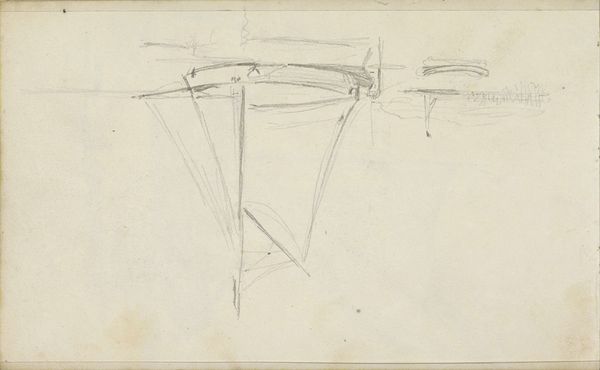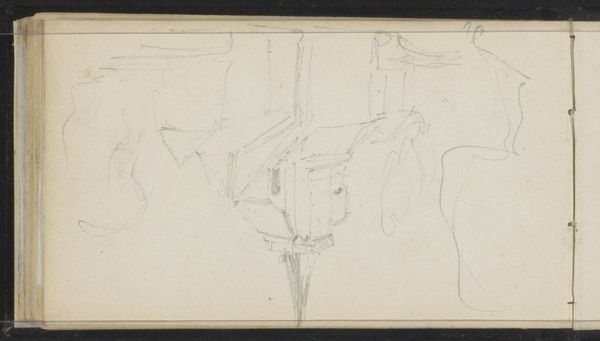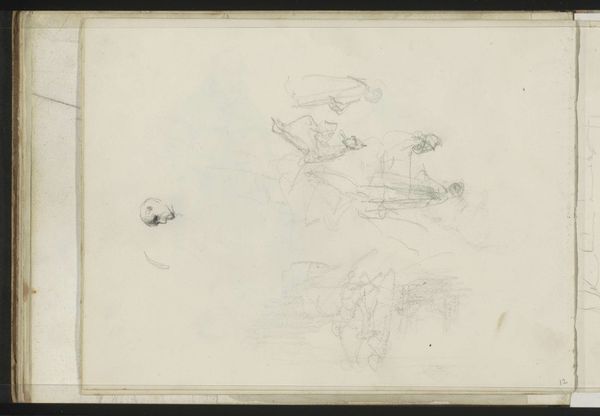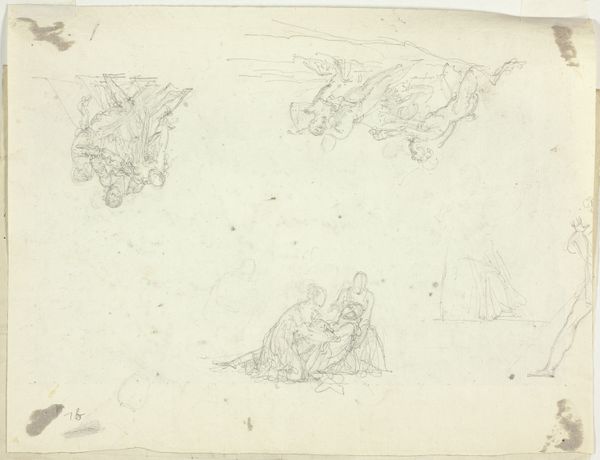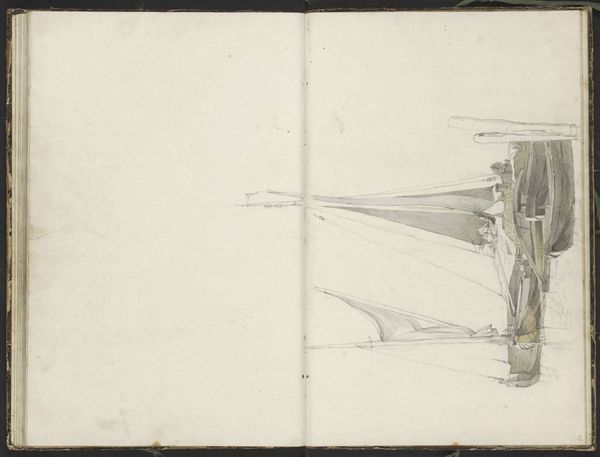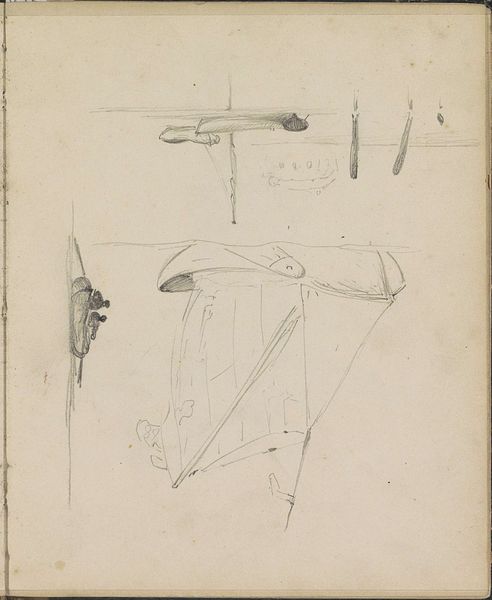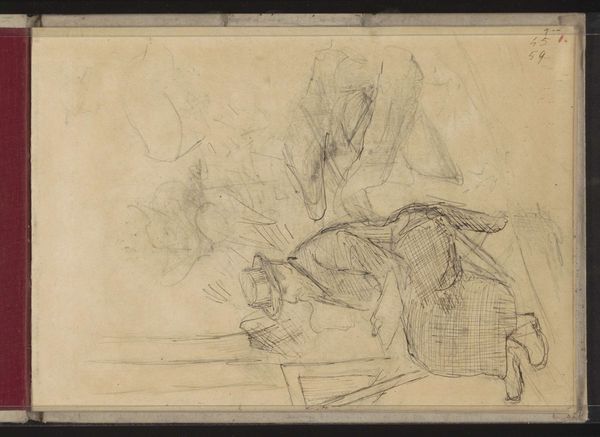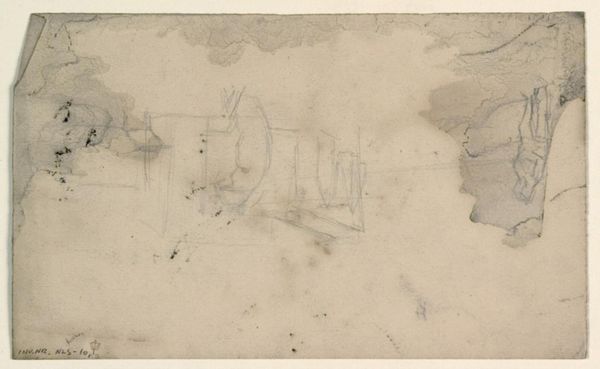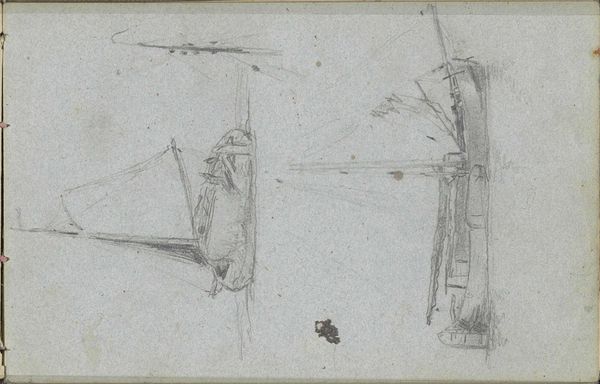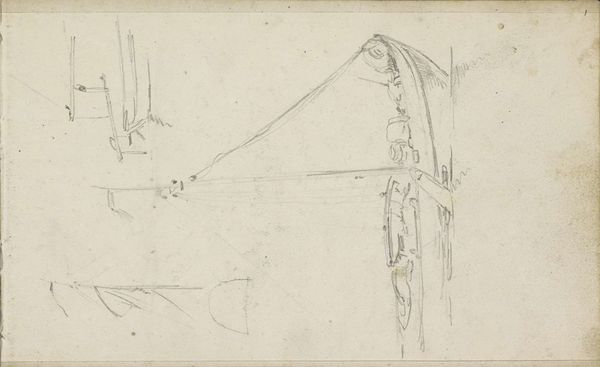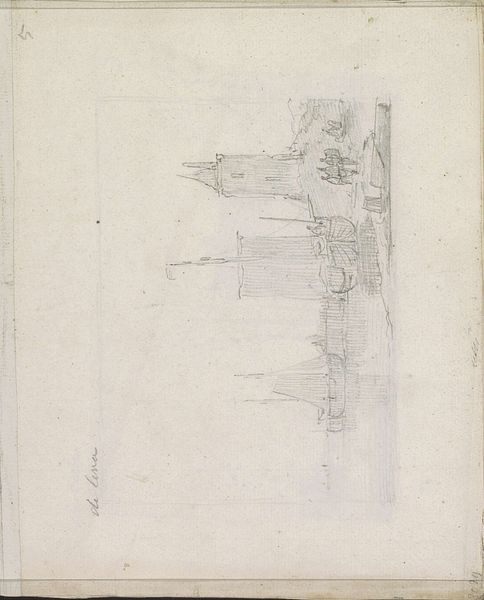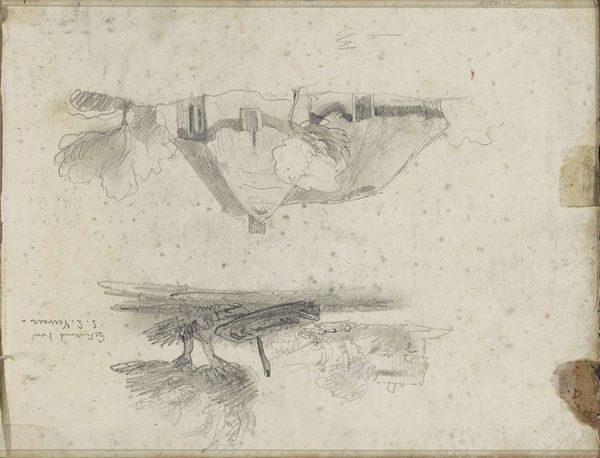
drawing, paper, pencil
#
portrait
#
drawing
#
amateur sketch
#
aged paper
#
toned paper
#
light pencil work
#
impressionism
#
pencil sketch
#
incomplete sketchy
#
figuration
#
paper
#
personal sketchbook
#
pencil
#
sketchbook drawing
#
sketchbook art
#
initial sketch
Copyright: Rijks Museum: Open Domain
Editor: This is a sketch titled "Studieblad met vrouwen," or "Study Sheet with Women," by George Hendrik Breitner, created sometime between 1872 and 1879. It's a pencil drawing on paper, and the figures are very lightly sketched. What strikes me is the intimacy of what feels like a private sketchbook. What do you see in this piece? Curator: Well, first, I see a glimpse into the artist's process, a kind of visual record of how Breitner was grappling with representing women. Think about the late 19th century – rapid urbanization, shifting social roles, and the rise of the "New Woman." Breitner, known for documenting urban life, was undoubtedly influenced by these changes. These aren't idealized figures, are they? They feel real, captured in fleeting moments. Editor: No, they definitely don’t feel idealized. More like snatched moments, almost like street photography, but in sketch form. Were these women from a particular social class? Curator: That's a great question. Considering Breitner’s broader body of work, which often depicted working-class women and scenes from everyday life, it’s possible. He was interested in representing modern life as it was, including the realities of women from various backgrounds. The looseness of the sketches, though, makes it hard to say definitively. But this also opens up a crucial discussion, no? How do we see class and gender intersect in these rapidly drawn sketches? Editor: It makes me wonder about the relationship between Breitner and his subjects. Was he observing from a distance, or did he interact with these women? Curator: Exactly. His perspective matters. Was he an objective observer, or was his gaze shaped by the social norms of his time? How do his sketches perpetuate, or perhaps even challenge, those norms? The sketch is really a point of departure for a much bigger set of questions. Editor: I see that now. I initially saw it as a simple sketch, but you've highlighted how it can be a lens into a specific time and place. Curator: Precisely. By understanding the historical and social context, we can unpack the complexities embedded in what appears to be a simple drawing. These are more than just lines on paper; they're fragments of a conversation about identity and representation. Editor: This has totally changed how I look at sketchbooks! Thanks.
Comments
No comments
Be the first to comment and join the conversation on the ultimate creative platform.
